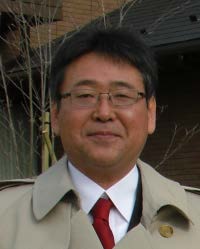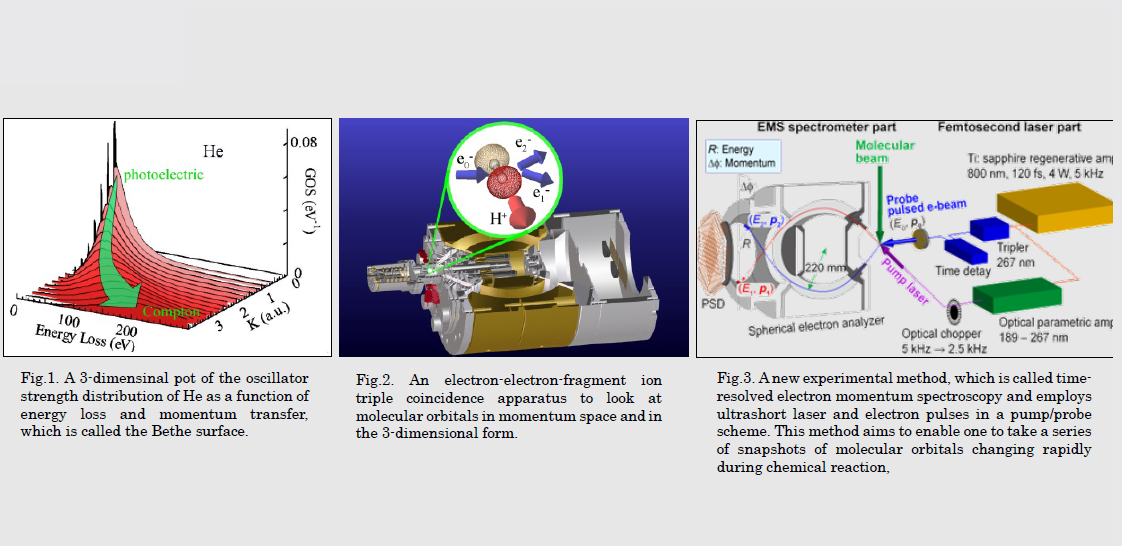
IMRAM
Institute of Multidisciplinary Research for Advanced Materials, Tohoku University
東北大学
多元物質科学研究所

LAST UPDATE 2021/05/07
-
研究者氏名
Researcher Name高橋正彦 Masahiko TAKAHASHI
教授 Professor -
所属
Affiliation東北大学 多元物質科学研究所
マテリアル・計測ハイブリッド研究センター 量子電子科学研究分野
Institute of Multidisciplinary Research for Advanced Materials, Tohoku University
Materials-Measurement Hybrid Research Center, Quantum Electron Science -
研究キーワード
Research Keywords分子科学
電子衝突物理
コンプトン散乱
時間分解分光
Molecular science
Electron collision physics
Compton scattering
Time-resolved spectroscopy
- 研究テーマ
Research Subject -
電子衝突を用いた静的および動的分子科学
Molecular science using electron collisions from the static to the time-resolved regime
研究の背景 Background of the Research
分子科学は、分子を深く知り、分子を司る原理を学んで、それらを自在に操ることを究極の目標とします。分子がつくりだす多種多様な自然現象の源を探る分子科学は、物質科学から生命・宇宙科学にわたる自然科学の広範な研究分野や工学・医学など我々の生存を支える多くの学問の基礎となるものです。
The goal of molecular science is to know molecules, to learn principles that govern fundamental properties of molecules, and to manipulate those as desired. Molecular science also seeks the origins of various phenomena that molecules create, and it therefore forms the basis for a broad range of natural sciences such as material, life and space sciences as well as other academic disciplines including engineering and medicine, which are essential to building better human lives.
研究の目標 Research Objective
分子科学を独自の切り口で推進するために、電子衝突を利用しています。具体的には、(1)幅広い移行運動量領域にわたる電子-分子衝突の立体ダイナミクス、(2)分子軌道形状の運動量空間における3次元観測、(3)化学反応を根源的に司る分子軌道の変化の時間分解スナップショット撮影、の3つの課題を主に研究を進めています。
Electron impact is used for advancing molecular science in a fashion unique to ourselves. Specifically, experimental studies on the following three subjects have been made and will be done: (1) stereodynamics of electron-molecule collision at a wide range of momentum transfers from the dipole to the Compton regime, (2) observation of spatial patterns of molecular orbitals in momentum space and in the 3-dimensional form, and (3) time-resolved imaging of molecular orbitals during chemical reactions.
研究図Figures

論文発表 / Publications
Bull. Chem. Soc. Japan, 82, 751-777 (2009). 日本物理学会誌, 69 巻, 1 号,18-23 (2014). 光アライアンス, 25 巻, 12 号, 41-46 (2014). Phys. Rev. Lett. 94, 213202 (2005). Phys. Rev. Lett. 98, 013201 (2007). Phys. Rev. Lett. 108, 173201 (2012). Phys. Rev. Lett. (2015), in press.
研究者連絡先 / HP
- masahiko
 tohoku.ac.jp
tohoku.ac.jp - http://www2.tagen.tohoku.ac.jp/lab/takahashi-m/